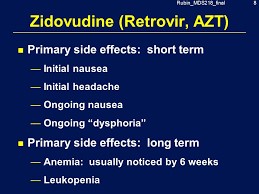In assessing a client at 34 weeks gestation, the nurse notes that she has a slightly elevated total T4 with a slightly enlarged thyroid, a hematocrit of 28% (0.28 volume fraction), a heart rate of 92 beats per minute, and a systolic murmur. Which finding requires follow-up?
Reference Range:
Hematocrit [37% to 47% (0.37 to 0.47 volume fraction)]
Hematocrit of 28% (0.28 volume fraction).
Heart rate of 92 beats per minute.
Systolic murmur.
Elevated thyroid hormone level.
The Correct Answer is A
A) Correct- Hematocrit values below the reference range during pregnancy could indicate anemia, which requires further evaluation and intervention. The other findings can be attributed to normal physiological changes during pregnancy (elevated total T4, heart rate increase) or can be common findings (systolic murmur).
B) Incorrect - A heart rate of 92 beats per minute is within the normal range for pregnancy due to increased blood volume and hormonal changes.
C) Incorrect - A systolic murmur can be a common finding during pregnancy due to increased cardiac output.
D) Incorrect - An elevated total T4 can be a normal finding during pregnancy due to hormonal changes.
Nursing Test Bank
Naxlex Comprehensive Predictor Exams
Related Questions
Correct Answer is D
Explanation
The correct answer is choice d. Explain to the parents that anger is a common response to grief.
Choice A rationale:
Referring the parents to the chaplain for grief counseling can be beneficial, but it may not address the immediate emotional outburst and the need for understanding their feelings.
Choice B rationale:
Telling the parents that blaming each other will not change the situation might be true, but it can come across as dismissive and may not provide the emotional support they need at that moment.
Choice C rationale:
Assuring the parents that a terminal diagnosis is inevitable does not address their current emotional state and may seem insensitive to their grief and anger.
Choice D rationale:
Explaining to the parents that anger is a common response to grief helps them understand their emotions and provides immediate emotional support, making it the best intervention in this situation.
Correct Answer is A
Explanation
A) Correct- Zidovudine is an antiretroviral medication used in the treatment of HIV infection.
One of the potential side effects of zidovudine is hematological toxicity, including anemia (low red blood cell count) and neutropenia (low white blood cell count). The appearance of pinpoint, red, round spots on the skin could be indicative of petechiae, which are small hemorrhages caused by the leakage of blood into the skin. Petechiae can occur due to low platelet counts, a
component of the complete blood count (CBC). Monitoring the complete blood count is important for clients receiving zidovudine to identify any potential adverse effects on blood cell counts. Anemia and neutropenia can increase the risk of infection, bleeding, and other complications. Therefore, any changes in blood cell counts, including the presence of petechiae, should be reported to the healthcare provider for further evaluation and management.
B) Incorrect- This is used to assess allergic reactions and is not specifically related to the appearance of petechiae.
C) Incorrect- A skin biopsy is typically performed to diagnose skin conditions or diseases and is not the primary assessment to evaluate the cause of petechiae.
D) Incorrect- Electromyography is a diagnostic test used to assess muscle and nerve function and is not relevant to the appearance of petechiae associated with zidovudine use.

Whether you are a student looking to ace your exams or a practicing nurse seeking to enhance your expertise , our nursing education contents will empower you with the confidence and competence to make a difference in the lives of patients and become a respected leader in the healthcare field.
Visit Naxlex, invest in your future and unlock endless possibilities with our unparalleled nursing education contents today
Report Wrong Answer on the Current Question
Do you disagree with the answer? If yes, what is your expected answer? Explain.
Kindly be descriptive with the issue you are facing.
